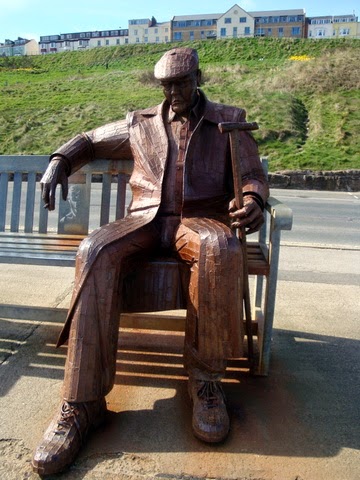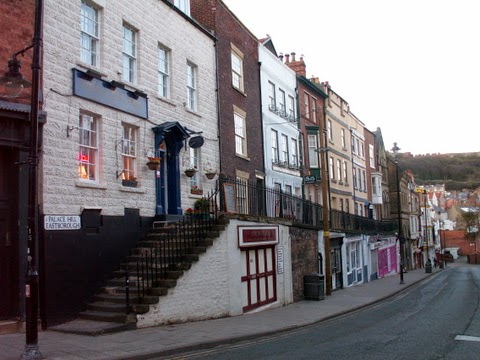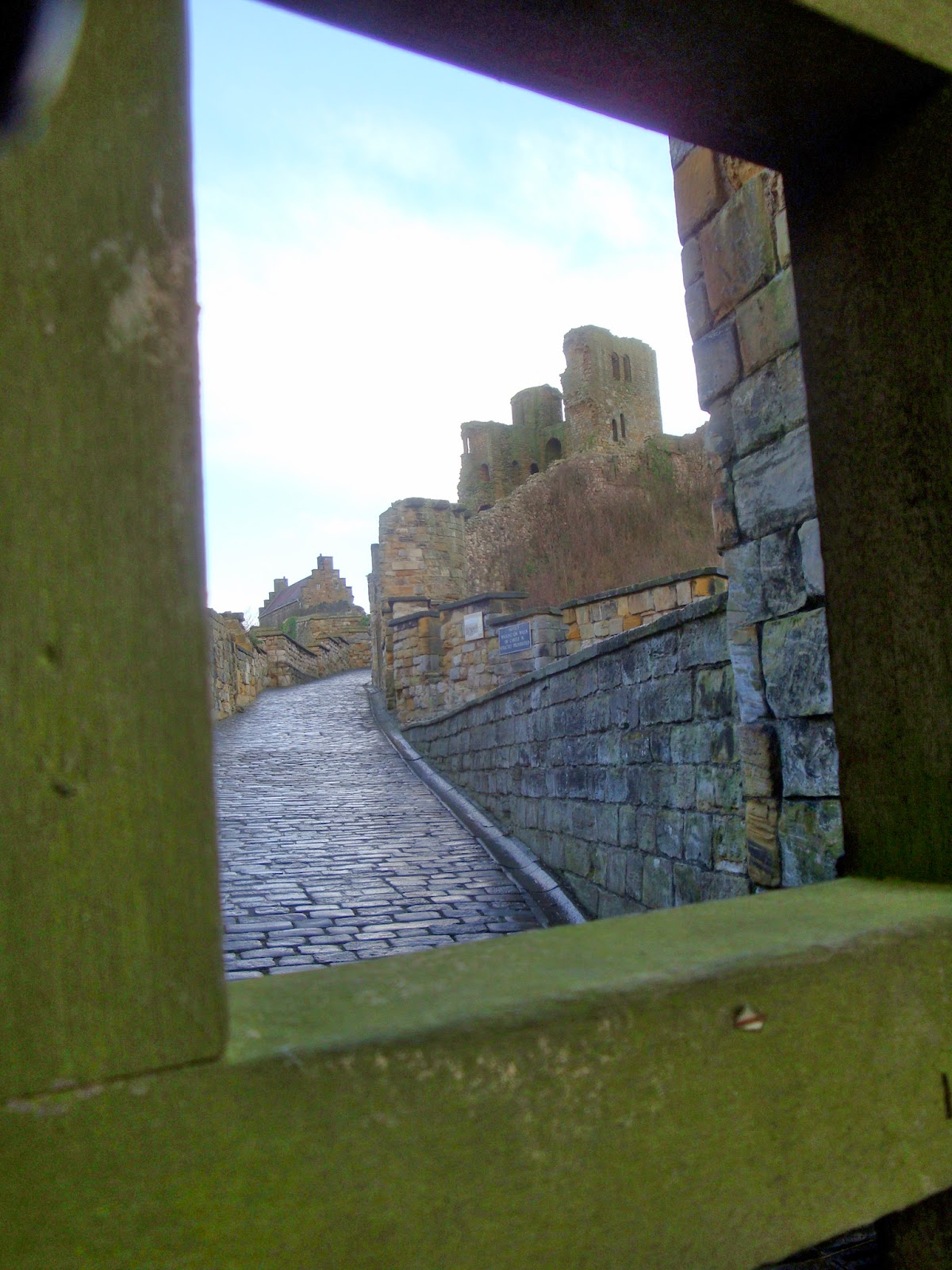The North Side and the Town Centre
Good views are to be had from the castle over the north bay and the coast to the north which sweeps up to the North York Moors. This foreshore is more sedate and lacks the amusements of the south side. There is a Sea Life Centre at the end of the promenade at Scalby Mills and the bay is popular with wind surfers and the like. Some further development of this area is projected
but progress is slow.

The castle ruins are quite prominent from this side.
The huge sculpture of Freddy Gilroy has been a prominent feature of the
north side promenade since 2011.
discoveryorkshire.com tells us :
'Freddie Gilroy and the Belsen Stragglers' is a giant steel structure made by
Ray Lonsdale, an artist, fabricator and sculptor and is now on permanent
display, thanks to the generosity of a local Scarborough resident.The sculpture is based on a retired miner Ray became friends with who turned out to also be one of the first soldiers to relieve the Bergen-Belsen concentration camp at the end of World War II.
This piece of art is not just about Freddie Gilroy but represents all the normal people that were pulled out of an ordinary life and forced into a very extraordinary and dangerous one during the World Wars.
Ray Lonsdale, sculptor from County Durham said:
"Scarborough is a unique town and I am pleased that my 'Freddie Gilroy and the Belsen Stragglers' will be on show there for residents and visitors alike to look at and enjoy. This piece is almost a war memorial as it depicts the lives of all those who suffered during the World Wars".
"I hope that people get enjoyment from my sculptures but also reflect on the sensitivity and emotion which I have tried to convey through my work."
The sculpture is located near to the Oasis Cafe on Scarborough's North Bay.
The old Corner Café has now been replaced by a new development of shops, cafes and apartments as part of the regeneration of the north side.
The Sea Life centre can be seen at the end of the promenade at Scalby Mills.
There is a fine sandy beach which is safe for sea-bathing and is popular
with surfer's and water skier's.
One of the most popular attractions of the North Side is Peasholm Park with its central island walk. Rowing boats grace the lake and regular concerts are held on the floating bandstand.
Scarborough Corporation bought the land in 1911 from the Duchy of Lancaster.
When the lake was dug out, the remains of the medieval manor house was uncovered. The manor belonged to Richard 111 and the Crown still holds manorial rights to the estate.
Peasholm Park
































































